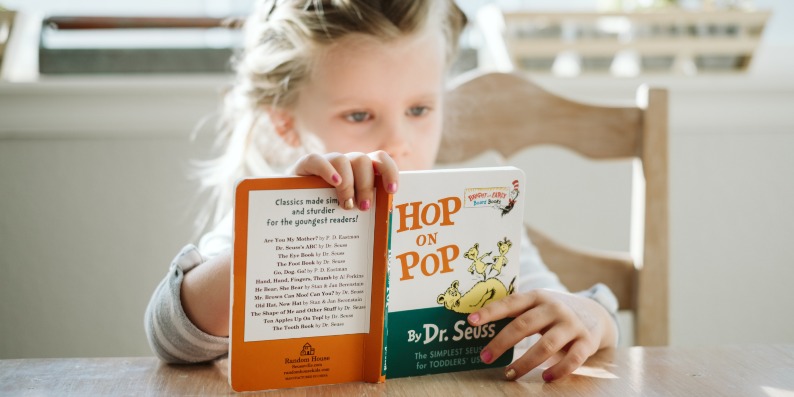We all want to do the best possible job for our children - even in a pandemic - but we’re all dealing with a lot of stressors. I want to acknowledge the importance of reducing our OWN stress. People keep calling what we’re doing ‘homeschooling’, so let’s get some perspective.
Table of Contents
Regular homeschoolers - during regular, non-pandemic times - do not homeschool 6 hours a day, five days a week. In fact, on average, regular homeschooling is as follows: 1-2 hours for elementary school a day, 2-3 hours for middle school, and 3-4 hours for high school. Academic material can be learned much quicker in a homeschool environment and non-academic materials can be included in all sorts of other, less structured activities.
But right now, we’re dealing with homeschooling-the pandemic edition. All of us, including our kids, are already on a steep learning curve about what it means to be a good neighbor, how we care for one another, and how we deal with stress and uncertainty. These are important life lessons. They should be prioritized! But this unprecedented time is also an opportunity for your kids to learn more about the things that fascinate them. There is more time to develop new and necessary life skills. You don't have to recreate the school curriculum to keep your child engaged with learning!
During this pandemic, life lessons matter and the goal is learning. “That’s great,” you say, “but you don’t know my kid. You don’t know how many meltdowns my five-year-old has every day. Or how impossible it is to get my 12-year-old out of bed in time for their Zoom class meeting. Or how chaotic my house and my work and my life feels right now.” And you’re right, I don’t know, but I can imagine. I want to introduce an idea that is the foundation of my coaching practice.
Compassionate Curiosity.
We introduce the question, ‘What if there IS A REASON for the behavior/chaos/challenges I/my partner/my child is dealing with right now?’
Instead of treating behavior as manipulative or intentional and in need of punishment, what if we looked at it as a rudimentary- albeit often frustrating - way of communicating? Think of this behavior as your child trying to communicate their emotional world when they lack the words and capacity for healthier forms of communication. (It’s not a coincidence that toddlers’ tantrums recede as their verbal and communication skills improve!) What if we could learn more about those emotions and develop better strategies to get to the root of the issue? What if, in the process of finding the root, we’re able to reduce the unwanted behavior? This premise underlines my work as a parenting coach.
Zones of Regulation: Getting to Calm

This concept breaks down emotional regulation by color in order to better understand our emotions. A critical requirement for learning is getting to the green zone where we find: CALM. CALM brains are ready to LEARN. Emotional self-regulation is understanding what calm is and how we get there. As a parent, we need to figure out what zone WE are in and what we need to do to move toward the green zone. From there we can figure out what zone our CHILDREN are in and how to help THEM move toward the green zone. Regulating hydration and blood sugar levels can make a big contribution to getting ourselves and our kids to the Green Zone, but it’s important to note that, in most cases, we will struggle to take our children to a zone that we are not in ourselves. Achieving calm occurs within the scaffold of a predictable structure. A world where there is order and routine allows our brains to know that we are safe and that our basic needs will be met. A predictable structure isn’t the same as a rigid schedule. All we are looking for right now is a simplified, personal plan.
Research has taught us that the only way for us to LEARN is to get to CALM. And along with our predictable structure the “4 M’s”- Meet, Move, Make and Meaning- are tools we can use to achieve and maintain Calm.
Using the 4M's to Get to Calm
Meet.
Meeting and connecting have a remarkable impact on helping us get calm. Whether it’s a cuddle on the couch, reading with a sibling, roughhousing with the dog, or playing a game as a family, MEET helps us feel connected, which helps us feel SAFE and therefore CALM. The Meet is important in helping our children GET calm, but it is also critical in helping them STAY calm.
Move.
Our bodies are designed to move. Movement is critical in helping us both GET calm and STAY calm. Practicing the timetables is a boring task for most children, but may be much easier (and more fun) while skipping rope or jumping on a trampoline.
Make.
We are highly creative beings. Whether in play, art, music, dance, cooking, poetry, or Minecraft, our desire to MAKE is crucial to both creating the calm we need to learn and helping us with the learning itself.
Meaning.
Our capacity to feel a sense of purpose and the experience of achievement is critical to our mental well-being. Meaning helps us think beyond ourselves and our circumstances. This broader view of the world helps ground our own perspective on our lives and experiences. Meaning is often where motivation is most deeply ingrained. Along with helping us feel calm and like we are contributing to something of value, meaning also helps to motivate us when learning gets hard. Think about the care and attention your child puts into the art they want to make for Mother’s Day vs. the map they are asked to color for geography. The meaning behind the activity has a significant impact on how calm, engaged, and motivated your child is to complete the task at hand.
Final Words of Encouragement.
This ‘moment’ in history seems so long when we’re in the middle of it, but we will get through. Whether we go back to the old normal or write a new normal, this will one day be a memory for us and for our children. Every single child who is school-aged today will have spent part of this year at home. They all went into this together and they will all come out of this together. Academically they will have the chance to catch up - provided they know how to get to calm and stay calm. That’s your job. If you do nothing else, you will have succeeded as a parent or caregiver if you can help them achieve calm. And anything else on top of that - a conversation on their favorite special interest, learning how to do a cartwheel in the backyard, creating the most epic lego creation ever, learning to bake bread, or even, miraculously, finishing some school assignments - it’s all icing on the cake.
Watch the full video here.




.png)

.png)

